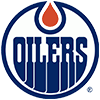Scarcity is one of those words that means different things to different people. There isn't an official fantasy baseball glossary, so there's no right or wrong. It's just a matter of semantics.
To many, scarcity refers to the number of draft-worthy candidates at each position. Players are ranked by their projected earnings without considering their position. In a 15-team mixed league with 14 hitters on an active roster, there will be 210 draft-worthy batters. If there aren't ample players at a given position to fill all 15 roster spots from that group, that position is labeled scarce.
The number will differ by projection and valuation system, but I count nine catchers in my top 210 hitters when positions are ignored. Since 30 are required, catchers are scarce. It's beyond the scope of this discussion, but there's a mathematical means to lift the absent catchers into the draft-worthy pool.
There was a time both middle infield spots were scarce, but it hasn't been the case for several years. Other than catcher, there are no longer scarce positions (by this definition), in even the shallowest of mixed leagues.
Scarcity has alternate connotations, one of which has been commonly utilized when discussing the 2022 drafting inventory. Both third base and outfield have been deemed scarce. Nit-pickers would argue they're not scarce but simply weaker than usual. This is the semantics alluded to earlier.
Practically speaking, it doesn't matter if the positions are scarce, weak, or whatever descriptor you deem appropriate. What's important is
Scarcity is one of those words that means different things to different people. There isn't an official fantasy baseball glossary, so there's no right or wrong. It's just a matter of semantics.
To many, scarcity refers to the number of draft-worthy candidates at each position. Players are ranked by their projected earnings without considering their position. In a 15-team mixed league with 14 hitters on an active roster, there will be 210 draft-worthy batters. If there aren't ample players at a given position to fill all 15 roster spots from that group, that position is labeled scarce.
The number will differ by projection and valuation system, but I count nine catchers in my top 210 hitters when positions are ignored. Since 30 are required, catchers are scarce. It's beyond the scope of this discussion, but there's a mathematical means to lift the absent catchers into the draft-worthy pool.
There was a time both middle infield spots were scarce, but it hasn't been the case for several years. Other than catcher, there are no longer scarce positions (by this definition), in even the shallowest of mixed leagues.
Scarcity has alternate connotations, one of which has been commonly utilized when discussing the 2022 drafting inventory. Both third base and outfield have been deemed scarce. Nit-pickers would argue they're not scarce but simply weaker than usual. This is the semantics alluded to earlier.
Practically speaking, it doesn't matter if the positions are scarce, weak, or whatever descriptor you deem appropriate. What's important is getting a lay of the land, and concocting ways to navigate a snake draft.
The following is one man's view of the player pool, incorporating my own projections and valuations. The players are ranked via projected earnings, which doesn't always match a cheatsheet. However, it suffices for this purpose, which is to get a general feel for the player pool and how to attack drafting.
Data for 15-team mixed leagues will be analyzed. Hitting requirements are the standard 14 batters (2-C, 1-1B, 1-2B, 1-3B, 1-SS, 1-1B/3B, 1-2B/SS, 5-OF, 1-UT). Players need 20 games at a position last season to be eligible.
Let's start with the number of draft-worthy players at each position. Conventional valuation assigns positive projected earnings to exactly enough players to populate each active roster, which in this case is 210. The 210th player is set at $1. The following shows the number of players qualifying at each position, with multiple eligibility players included in each legal spot.
| Pos | No. Players |
|---|---|
| C | 30 |
| 1B | 32 |
| 2B | 35 |
| 3B | 27 |
| SS | 31 |
| OF | 91 |
My trusty Texas Instruments TI-40 calculator tells me the above adds up to 246, but only 210 are needed. This table shows the number of player with multiple eligibility at each spot.
| Position | No. MEP | Draft-Worthy | %MEP |
|---|---|---|---|
1B | 9 | 32 | 28.1% |
2B | 24 | 35 | 68.6% |
3B | 8 | 27 | 29.6% |
SS | 14 | 31 | 45.2% |
OF | 13 | 91 | 14.3% |
A minimum of 15 players are needed at each infield position, with enough extra to cover the middle and corner spots. At least 75 outfielders are necessary. Sufficient leftovers from all the spots, along with the draft-worthy UT-only players, are needed to fill the Utility spot. This table combines the middle and corner positions together to illustrate the lack of scarcity in the conventional sense.
| Position | Needed | Draft-Worthy | % Rostered |
|---|---|---|---|
C | 30 | 30 | 100.0% |
CI | 45 | 59 | 76.3% |
MI | 45 | 66 | 68.2% |
OF | 75 | 91 | 82.4% |
The results from the two preceding tables corroborate the perceived scarcity/weakness of third base and outfield. The first table shows third base not only has the fewest candidates, bus also the fewest multiple eligibility options. The second table shows outfield has the greatest percentage of players legal at just that position available to fill that position. The strategical repercussions of these observations will be discussed later.
Something I like to do is look at the infield positions to get a feel for the relative strengths and weaknesses of each. Here are my current rankings based on projected earnings. The explanation for the colored background follows the chart.
Observations
Shortstop is Loaded
Thanks Lord Obvious, like we didn't know that. Yeah, yeah, yeah, sometimes it's nice to see what we perceive as intuitive. The first $15 player in each position is highlighted. Coincidentally, it's the 10th-best player at 1B, 2B and 3B. However, it's the 14th-best SS.
Another way of illustrating the strength of SS is via average projected earnings by position. The sum of the projected earnings for all draft-worthy players at each position is divided by the number eligible at each spot.
| SS | $14.84 |
| 1B | $13.56 |
| 3B | $12.70 |
| 2B | $12.26 |
Third Base Lacks Quality and Quantity
Duh, another tell me something I don't know. Check out Luis Urias. He's 12th best at 3B, but 17th at 2B and SS.
Now look at Yandy Diaz. He's ranked much higher at 3B.
Finally, look at the lowest ranked player at each position. This could be gleaned from the first table above, but 3B has the fewest 3B-eligible players. The first two points speak towards the lesser quality at the hot corner, this reflects the dearth of quantity.
Second Base is Deep, at the Top and Bottom
The average expected earning at 2B is the lowest, but due to 69 percent of 2B-eligible players enjoying multiple eligibility, there are more options.
This would be a different story if Trea Turner, Marcus Semien, Jorge Polanco and Jean Segura didn't pick up eligibility. However, depth-wise, 2B ties SS with the most players projected to earn at least $20.
Outfield is Shallow
While this obviously can't be visualized like the infield observations, the data from the earlier tables show 82 percent of the OF-eligible players have to be put at OF in a legal roster, by far the highest number. Further, there are fewer players with multiple eligibility including OF. Sure, there is an ample inventory of players, but the infield positions offer a greater selection and yield a better chance of finding someone who fits your team mold and/or is available at a price ahead of the market.
Strategic Implications
While it's not always possible to incorporate these in roster construction, there are some "on paper" ploys available to leverage the above observations. This is an application of the alternate form of scarcity. By placing players at certain spots, it weakens the quality of other position. The quantity remains sufficient to roster draft-worthy players, but strategic positioning can further reduce the quality at already weak positions.
For example, third base is already weak. If you rostered Jose Ramirez, Rafael Devers or Manny Machado early, drafting Luis Urias to slot in elsewhere induces even more 3B scarcity, at least in terms of quality. Your opponents will still have a warm body, projected to earn at least $1 to slot at 3B, but the inventory is thinned and the player they end up with may not be an ideal fit.
A good way to handle the shallower nature of the outfield is targeting one of the few multi-position outfielders and earmarking them for the OF. This way, you aren't forced to grab a late outfielder who doesn't help as much as some of the available infielders. Then, if there is a desirable late outfielder, you can move players around and find a spot. As ridiculous as this may have seemed a few years ago, Fernando Tatis may be more beneficial occupying an OF spot than SS. Crazy, but doing so helps fill OF while a plethora of good SS options will still be on the board.
A way to leverage the scarcer nature of 3B and OF is via Kris Bryant or Luis Arraez, the only draft-worthy players eligible at both spots. This helps increase the chance of finding another useful player at one of these two positions since the available inventory isn't coming from one or the other, but both.
When a position is termed scarce based on the quality, some recommend over-drafting someone to make sure you aren't stuck with one of the dregs. The counter to that is in terms of quantity, there will be a draft-worthy player available at some point, so it's not necessary to reach. However, just because the item may be in stock, it may not be what you're shopping for.
This calls into play the definition of a reach. Projection theory and valuation are flawed; by extension, so are the ensuing rankings. If I'm looking at Rafael Devers, Paul Goldschmidt, Matt Olson and Trevor Story, Devers would be fourth by projected earnings, but they're so close he's the no-brainer pick. How close players need to be for it not to be a reach is subjective. The decision also involves considering later options at the position you aren't choosing. In this case, there are a few first basemen (Josh Bell, C.J. Cron, Brandon Belt) and shortstops (Willy Adames, Gavin Lux) I like at the market price, so I won't regret choosing Devers.
Everyone ranks the player pool differently, so these aren't necessarily suggestions to follow verbatim. They're designed to be examples of how to formulate your own pathway, based on your own evaluation of the inventory.
Before we call it a day, there is one more definition of scarcity, implicit to drafting, and that's statistical scarcity. For kicks, I asked my Twitter followers for some of their definitions of scarcity, so I didn't miss any. Here is a great response:
The reduced frequency of a specific feature in a population compared to other features.
There is a reduced frequency of 10+ SB guys compared to 10+ HR guys in the same population of players, therefore SB are more scarce.
— LilBookOfCalm (@LilBookOfCalm) January 28, 2022
This concept is worthy of its own discussion. For example, not only does drafting Tatis help with forcing OF scarcity, it removes one of the few combo power/speed guys from the pool.
As always, please feel free to pose questions in the comments below.




































